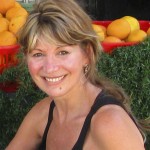
Mirta Kupferminc
Independent Artist
mirta@mirtakupferminc.net
www.mirtakupferminc.net
Biography
Born in Buenos Aires , Argentina ,(1955)
Held 70 individual exhibitions. Biennials: Koichi, Kanagawa, Taipei, Kracow, Gÿor, Lubjiana, Puerto Rico, (selection). Her work can be found at the Fine Arts Museum de Taipei; Sokey Academy of Fine Arts in Tokyo ;Tama University Museum, Japan; Kleinsassen Museum ,Germany, Contemporary Collection Israel Museum , Jerusalem ;Fine Arts Museum in Taipei and Taichung ,Taiwan; National Library , Madrid, Spain; Golda Meir Library, Milwaukee, US(selection) – Received 24 National and International Awards (selection) : National Honor Award Argentina -Third Prize 7th International Triennial Kochi- Commendation Award-IJAYA, London; Silver Medal; Printmaking Biennial Taiwán; Honorable Mention, Printmaking Biennial of Taipei.
Illustrated Talk
FRONTIERS IN PRINTMAKING: LIMIT OR CHALLENGE ?
With this talk I want to raise a question on the aesthetic horizon that printmaking offers today.
Considering traditional definitions of what a print is, I will show some works where the words that describe that precise image keep being adjusted to the definition but the artistic result goes beyond traditional borders.
We are already used to see sculptures, installations, and different not traditional artworks where printed methods are the core of the presentation.
We can understand a frontier as a limit but also as an invitation to be transgressed . New technologies present new ethical questions and we are challenged to extend our paradigms.
The use of different supplies such as xerography, photopolymers, etc. ; that originally were created for the industry; make now possible for the artist the development of new creations. But what happens when some of these materials or supplies adopted by the artist becomes basic for the implementation of his image, and suddenly is not produced any more ? It is true that this type of problem should stimulate creativity of the artist, but also clearly demonstrates that the image of artists in a certain time is somehow also determined by available possibilities and technologies
Multiplicity and originality submit also new questions, for example with digital print, where the matrix is held by many people at a time and transformed in a file.
I present, based on my own work, some of the multiple possibilities of an image when joins traditional graphic techniques with new technologies. I also present in this conference a conceptual performance that deals with discrimination, that without graphic methods would not be possible .
Performance
PRINTED ON THE SKIN OF MEMORY
Trying to demonstrate that printmaking is nowadays beyond its own limits, is
that I am performing this daring provocation using printing methods.
The number tattoo is the predominant, perhaps even the singular signifier of the Shoa ( Holocaust) .Those who live with the Auschwitz tattoo live inside bodies that are memorials and media of defiance. Their arms are signposts alerting against the dangers of historical forgetting.
But how is the number tattoo seen and received? How does it intervene in our present? How does it signify at a time when ornamental tattoos have become popular forms of bodily display, carrying very different kinds of personal and cultural messages?
These are the questions that I want to raise. Being a daughter of Auschwitz survivors who grew up, embraced by my parents’ numbered arms. We are invited to look at the two kinds of tattoos, and to reflect on the differences between decorative choice and coerced numbering. A winged chair creates a symbolic space of contemplation. Voices surround the place with a constant murmur, and if we just stop to listen, individual accounts of tattooing and being tattooed reach our ears. And then, something else is being asked of us as well. Will we get a decorative design or a number? Who will determine which and by what logic? Staging the scene of the tattoo, I try to demonstrate that graphic methods allow me to present this conceptual experiential proposal.
Instead of the paper, is the skin the support of the print . Each person who gets a number will receive a different correlative one, turning to be an edition.
Can this be considered a print? Those who respond to the call will have to decide for themselves.
